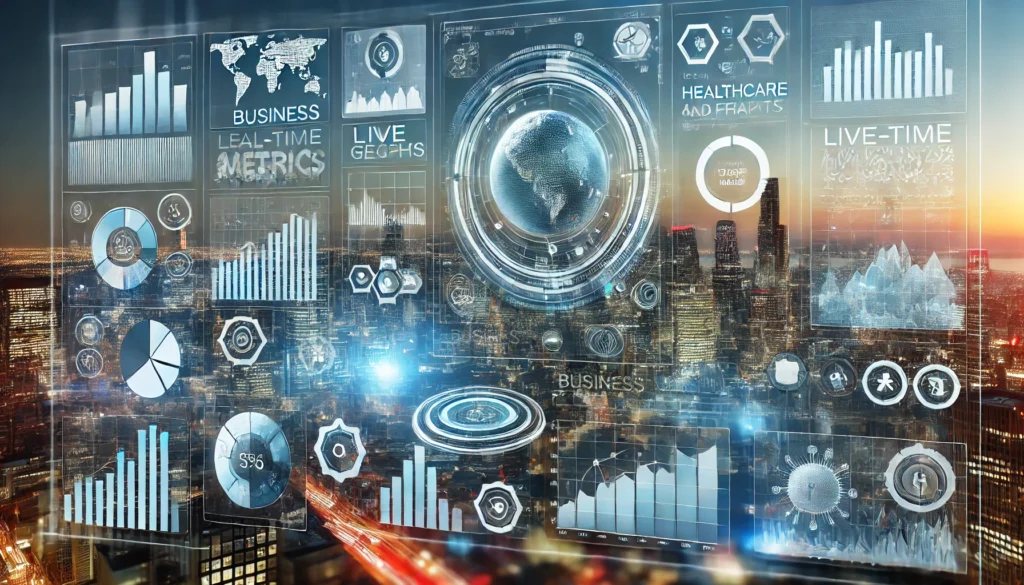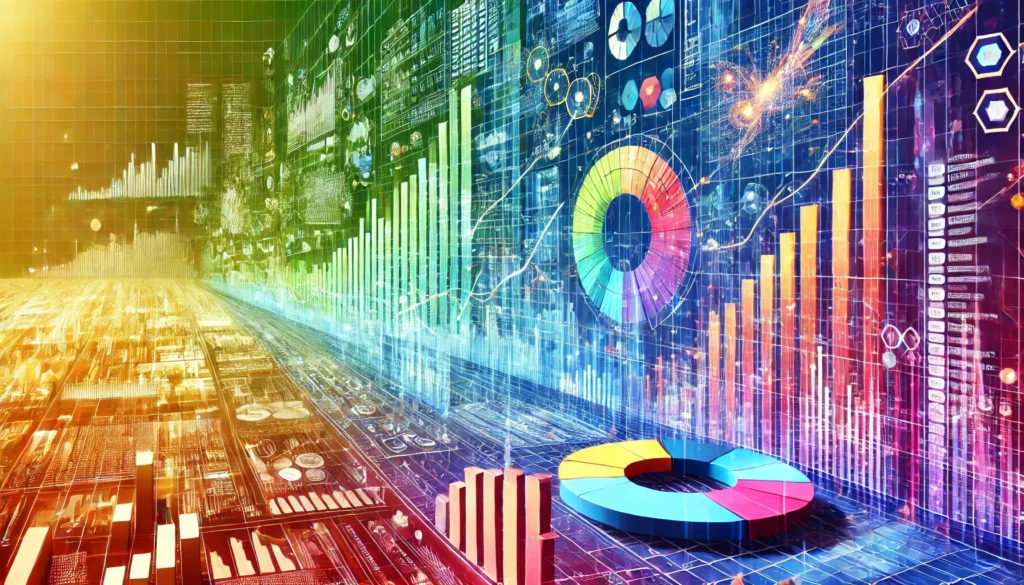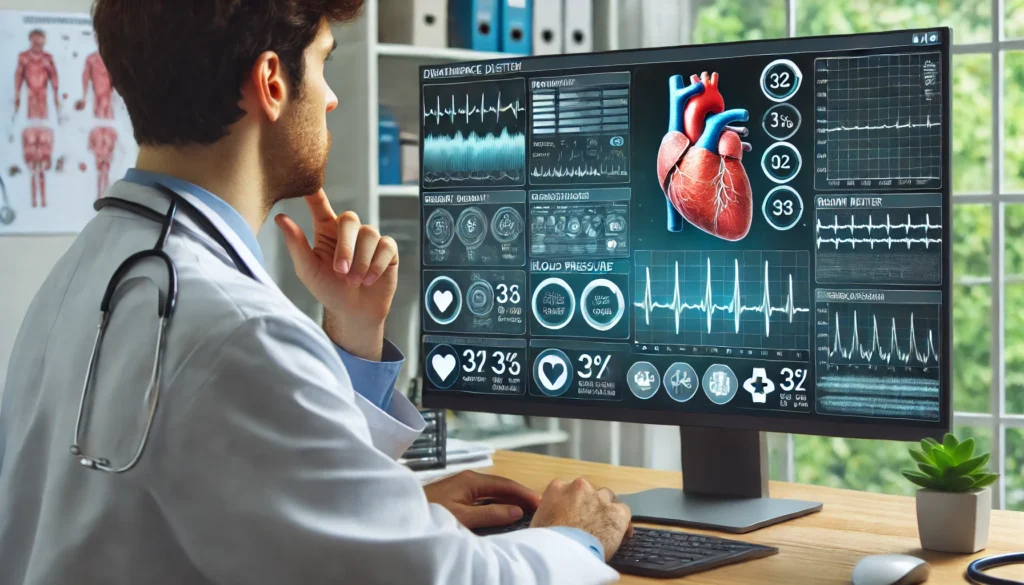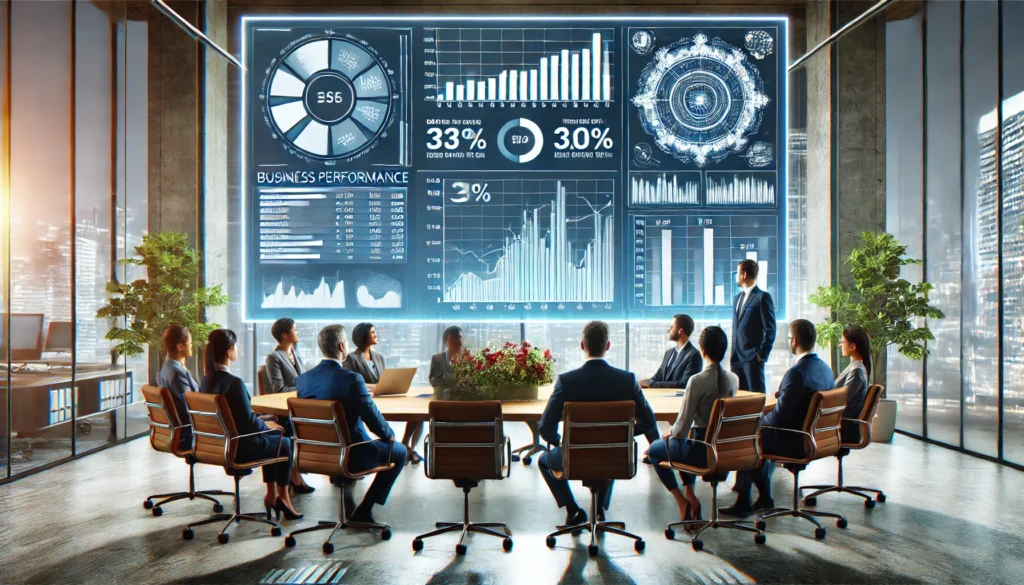The Power of Data Visualization in Decision-Making
In today’s fast-paced, data-driven world, the ability to interpret complex information quickly is essential. This is where data visualization shines, transforming vast amounts of data into easily digestible insights. When used correctly, data visualization can significantly enhance the decision-making process, enabling businesses, healthcare professionals, and even educators to make better, faster, and more informed decisions.
By visually simplifying data, trends, and patterns that are often buried in spreadsheets or raw data sets become immediately clear. But what is the real power of data visualization in decision-making, and why should every organization care about it?
Key Takeaways
- Data visualization transforms complex data into simple, actionable insights.
- It improves clarity, understanding, and speeds up the decision-making process.
- Visualization tools are used in various industries such as business, healthcare, and marketing to drive data-driven decisions.
What Is Data Visualization?

At its core, data visualization is the graphical representation of data. It leverages visual elements such as charts, graphs, maps, and dashboards to present data in a way that’s easier to understand.
Instead of sifting through long lists of numbers or reading detailed reports, you can see trends, outliers, and patterns in an instant. This not only saves time but also reduces cognitive overload.
Why Is It Important for Decision-Making?
When leaders and teams need to make decisions, having a clear visual picture of relevant data allows them to move more quickly. Imagine trying to make sense of rows and rows of spreadsheet data vs. viewing that same data as a simple bar chart. The difference is night and day.
Businesses, in particular, rely on data visualization to optimize operations, understand customer behaviors, and predict future trends. But visualization isn’t just limited to the business world—it’s being used in fields like healthcare, education, and even public policy to drive better decisions.
The Role of Data Visualization in Decision-Making
The power of data visualization in decision-making lies in its ability to transform complex and abstract data into something that is easy to digest. This has several key advantages when it comes to making more informed choices:
1. Simplifying Complex Data
When you’re faced with thousands of data points, it’s easy to get overwhelmed. Data visualization simplifies this complexity by boiling it down into key visuals that highlight the important aspects of the data. Whether it’s a sales trend over time or customer engagement metrics, you can see it at a glance.
2. Facilitating Better Understanding
Charts, graphs, and other visual aids allow decision-makers to grasp information quickly. For example, a pie chart showing the distribution of customer demographics can provide insight into where marketing efforts should be focused. This makes it easier for leaders to make decisions that are not only quick but well-informed.
3. Supporting Real-Time Decisions
Many data visualization tools now allow for real-time data tracking. This is particularly useful in fast-moving environments like financial markets or logistics, where every second counts. Decision-makers can respond quickly to data as it happens, minimizing delays and making proactive choices.
Example: Consider a supply chain manager using a real-time dashboard to track shipping delays. Instead of waiting for a weekly report, they can adjust routes or resources on the fly, improving efficiency.
Benefits of Data Visualization in Decision-Making

The benefits of data visualization extend beyond just making things look pretty. It actively helps in driving better business outcomes.
1. Improved Clarity
Data visualization helps you see the forest for the trees. Instead of getting bogged down by individual data points, decision-makers can focus on the overall patterns, trends, and insights that matter.
2. Faster Insights
Time is often of the essence in decision-making. Visual data not only allows for quicker comprehension but also helps in rapidly identifying the key insights needed for immediate action.
3. Promotes a Data-Driven Culture
In organizations, data visualization fosters a culture where decisions are based on data rather than gut feelings. When everyone can clearly see the same data, there’s less room for bias or misinterpretation.
4. Increases Stakeholder Engagement
When presenting data to stakeholders, visual representations are far more engaging than traditional reports. Whether you’re presenting to executives or a team, people are more likely to stay engaged and understand your point when it’s backed by clear visuals.
Types of Data Visualization Tools
Not all data visualization tools are created equal, and choosing the right one can be crucial for effective decision-making. Here are some of the most commonly used tools:
1. Charts and Graphs
- Line charts show trends over time.
- Bar charts compare different categories.
- Pie charts represent part-to-whole relationships.
2. Dashboards
These interactive tools allow decision-makers to track key performance indicators (KPIs) in real time. Dashboards often pull from multiple data sources and provide a comprehensive view of critical metrics.
Example: Tools like Google Data Studio and Tableau are commonly used to create real-time dashboards that track everything from sales metrics to customer behavior.
3. Geospatial Mapping
This type of visualization uses geographic data to reveal patterns based on location. It’s especially useful in fields like urban planning, logistics, and environmental science.
4. AI and Predictive Analytics Tools
With advancements in artificial intelligence (AI), modern visualization tools can even predict future trends based on historical data. This predictive analysis helps businesses make more proactive decisions.
How Data Visualization Improves Decision-Making in Various Fields

While the power of data visualization is particularly evident in business, its applications stretch far beyond.
1. Business
Companies use visualized data to make informed decisions about operations, marketing, and sales. For instance, customer data can be visually displayed to identify which demographics are responding best to a particular campaign, enabling businesses to adjust their strategies accordingly.
Learn How Data Visualization Helps Businesses
2. Healthcare
Doctors and healthcare administrators use data visualizations to track patient outcomes, streamline workflows, and improve resource allocation. Data from patient records can be visualized to reveal patterns in treatment success rates or hospital readmission rates.
3. Education
Educators and school administrators use data visualization to track student performance and identify areas that require more focus. This helps improve educational outcomes and optimize teaching strategies.
4. Marketing
Marketing teams can visualize campaign data to assess performance in real-time, making adjustments as needed to maximize return on investment.
How to Effectively Use Data Visualization for Decision-Making
1. Know Your Audience
Tailor the visualization to the people who will be using it. Executives may want high-level summaries, while data analysts may need more detailed visualizations.
2. Choose the Right Type of Visualization
Not all data is best represented by the same type of chart or graph. For example, trends over time are better visualized with line charts, while comparing categories is more suited for bar charts.
3. Storytelling with Data
Don’t just present data; tell a story with it. Your visualizations should guide the viewer through the data to lead them to the right conclusion.
FAQs: The Power Of Data Visualization In Decision-Making
What is data visualization in decision-making?
Data visualization transforms raw data into visual formats, making it easier for decision-makers to grasp trends and insights quickly.
Why is data visualization important in decision-making?
It simplifies complex data, reduces cognitive load, and improves both the speed and accuracy of decisions.
What are examples of data visualization tools?
Popular tools include Google Data Studio, Tableau, Power BI, and even Microsoft Excel.
How does data visualization support real-time decision-making?
Real-time dashboards allow stakeholders to monitor metrics as they happen, enabling faster responses to trends or issues.




